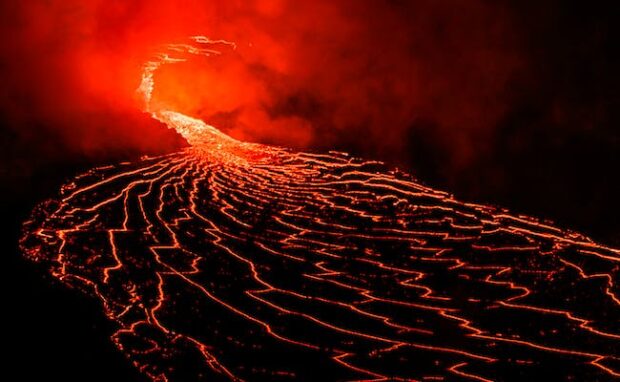Magma energy: Scientists drill volcano for unlimited power
Icelandic researchers are digging into volcanoes to harness their underground heat for limitless energy production. The project is at Krafla volcano, the “cradle of geothermal in Iceland and is the site of the country’s first geothermal power station,” said the Krafla Magma Testbed (KMT) website. Also, they will conduct other experiments alongside energy research.
Many countries like the Philippines harness energy from underground water sources heated by magma. However, Iceland aims to break new ground by tapping power directly from the source. If they succeed, other countries with volcanoes might gain a new, sustainable, and possibly unlimited energy source.
This article will discuss how Iceland plans to harness geothermal energy directly from magma. Later, I will show other emerging energy sources.
How will Iceland harness magma energy?

The inspiration for this energy exploration project started in 2009 during a geothermal drilling project for the Iceland energy company Landsvirkjun. Project crews encountered a magma chamber near the Krafla volcano.
Fortunately, they did not trigger a volcanic eruption, proving they could drill into magma safely. That encouraged researchers to start the Krafla Magma Testbed project in 2017.
Interesting Engineering says it is seeking $100 million in funding to drill by 2026 or 2027. KMT will use the funds to acquire advanced drilling equipment that can withstand extreme temperatures.
The website says it will enable the researchers to establish a 2,100 m deep monitoring borehole. It would also become the first permanent magma observatory in the world.
You may also like: China’s roadmap for space mining unveiled
The project will also deploy high-tech sensors to continuously monitor magma information, such as temperature. Moreover, KMT will perform the following at Krafla:
- Volcano monitoring: The project will expand our understanding of how the world reacts to volcanic activity. Consequently, it could help protect 800 million people who live within 100 km of an active volcano.
- Geoscience research: KMT will unearth magma samples to observe them directly. A better understanding of magma will help examine the real properties of the Earth’s deep interior. Also, it will help develop new models regarding how the planet works.
- Innovation & Technology: Magma energy research will involve new instruments and methods. As a result, it could guide improving magma-monitoring techniques and advance geothermal engineering in superhot environments.
“We want to get a better understanding of how magma behaves,” said Geothermal Research Cluster (Georg) director Hjalti Páll Ingólfsson. “This is certainly new in Iceland in that we have never been able to harness magma directly.”
What are our latest energy sources?
China will conduct the 1st sea trial of its self-developed and world's most advanced ocean-drilling research vessel, Mengxiang, in S China's Guangzhou on Dec 22. The ship, with a max range of 15,000 nmi, can operate for 120 consecutive days and drill in waters as deep as 11,000m. pic.twitter.com/CwKJCPCFTY
— China Science (@ChinaScience) December 18, 2023
China is also out at sea studying another promising energy source: solid, ice-like chunks of methane gas. It is also known as methane hydrate or “flammable ice.”
The country deployed the 33,000-ton vessel Mengxiang to scan the South China Sea for methane hydrate sources. It is reaching a depth of 36,089 feet or 11,000 meters to access roughly 80 billion tons of flammable ice.
That depth surpasses the Mariana Trench, the deepest point of the world’s oceans, measuring 36,200 feet or 11,034 meters. The ship will use smart technology like the digital twin system to monitor drilling operations.
Soon, the country may extract methane from flammable ice, letting it become more energy-independent. However, it may spark geopolitical tensions due to sovereignty claims.
You may also like: The world’s first underground robot delivery service
China also announced a radioactive battery that can power devices nonstop for 50 years. It uses Nickel-63, a radioactive material that becomes copper once it decays.
That means the battery becomes safe to dispose of once it completely decays. Also, its creator, Betavolt, said it could function at -60°C to 120 °C or 76°F to 248°F.
The company plans to install its BV100 battery into health implants like pacemakers. Moreover, it could deploy several energy cells to power larger machines like satellites.
Conclusion
Iceland will test magma energy production at the Krafla volcano to generate more power than ever. Soon, it could replace geothermal energy worldwide.
“We are talking about 10 times more power from a magma well than a normal geothermal well,” said researcher Hjalti Páll Ingólfsson. Moreover, he stated magma energy might also be viable for underwater volcanoes.
Learn more about this magma energy study on the Krafla Magma Testbed (KMT) website. Also, check out the latest digital tips and trends at Inquirer Tech.